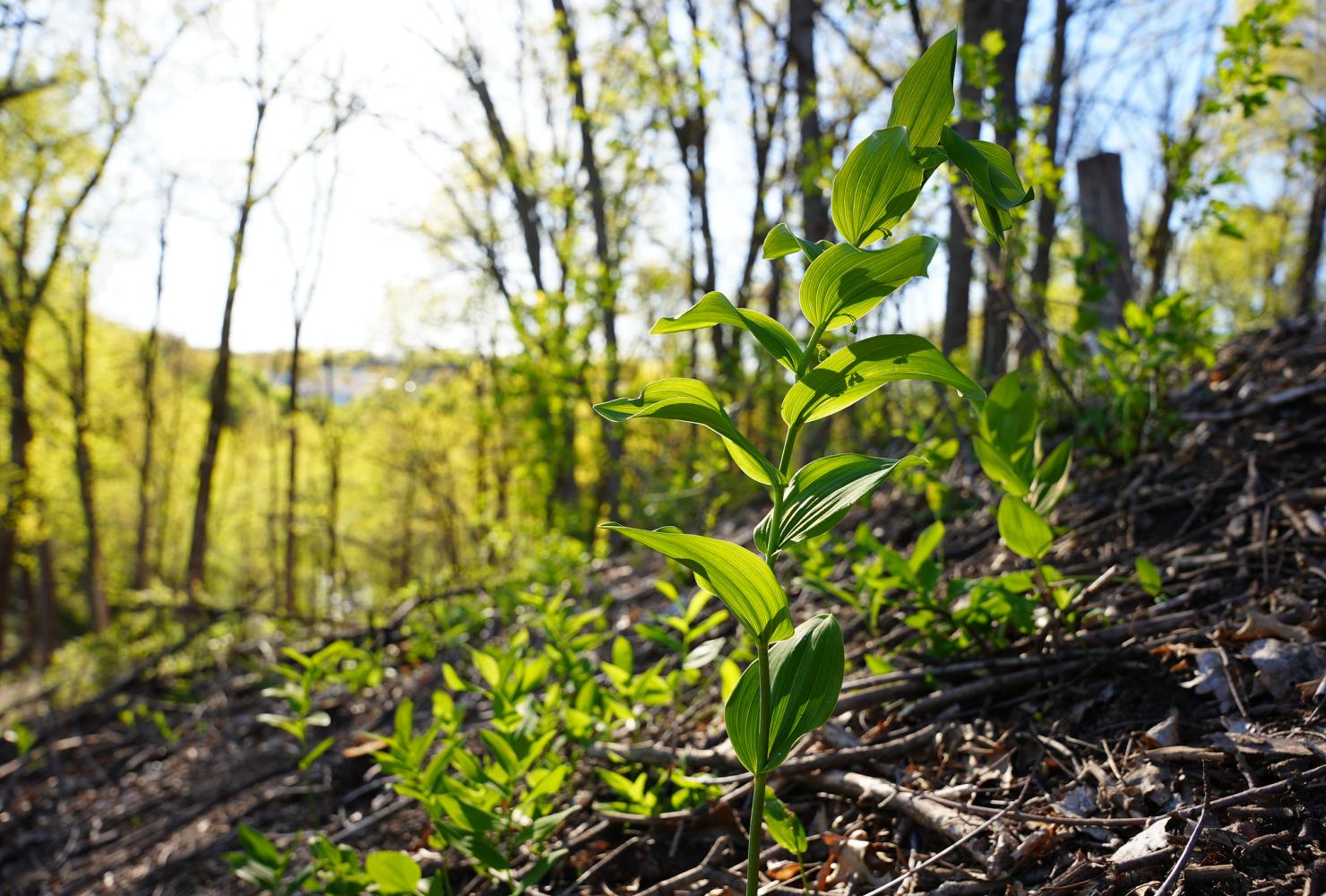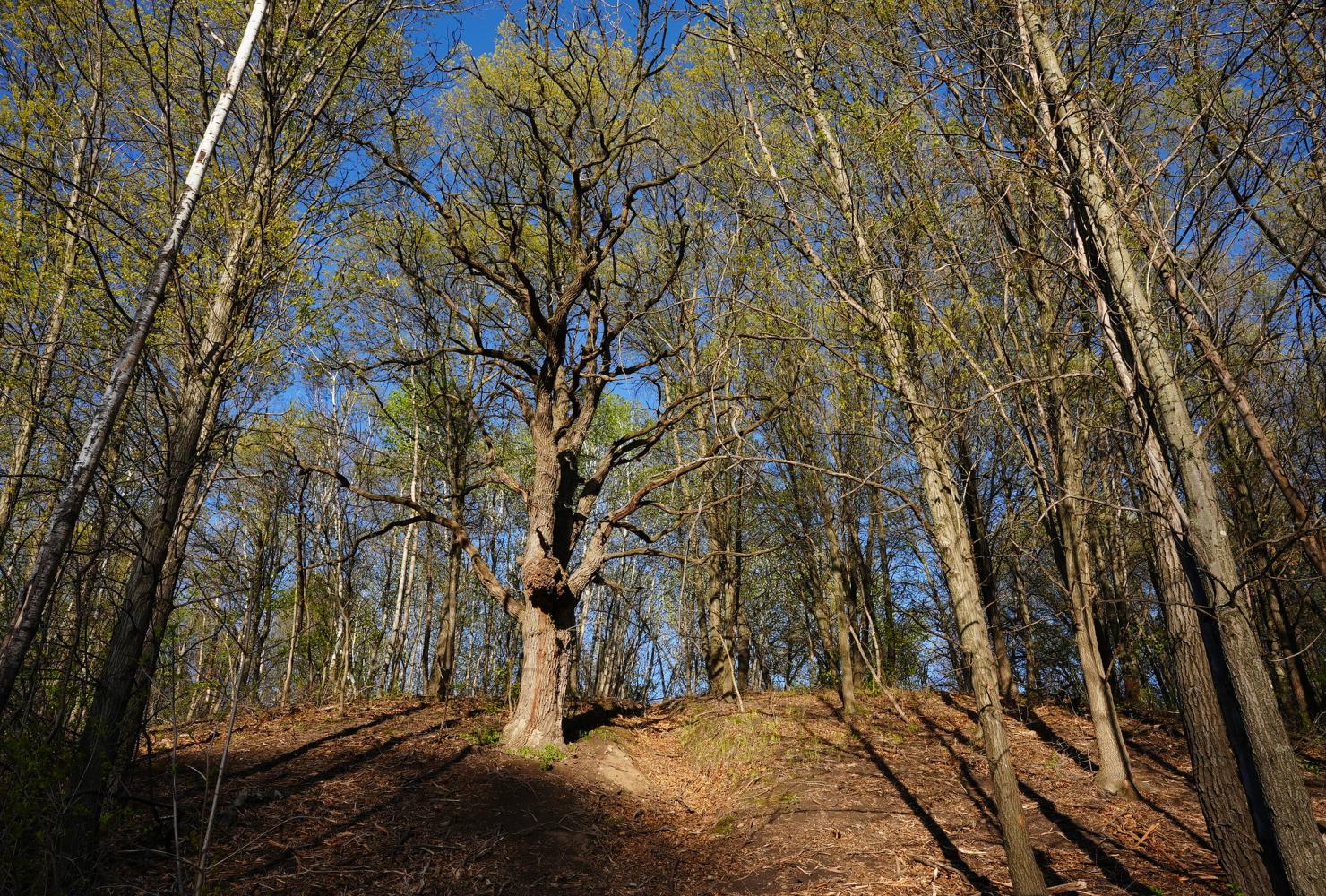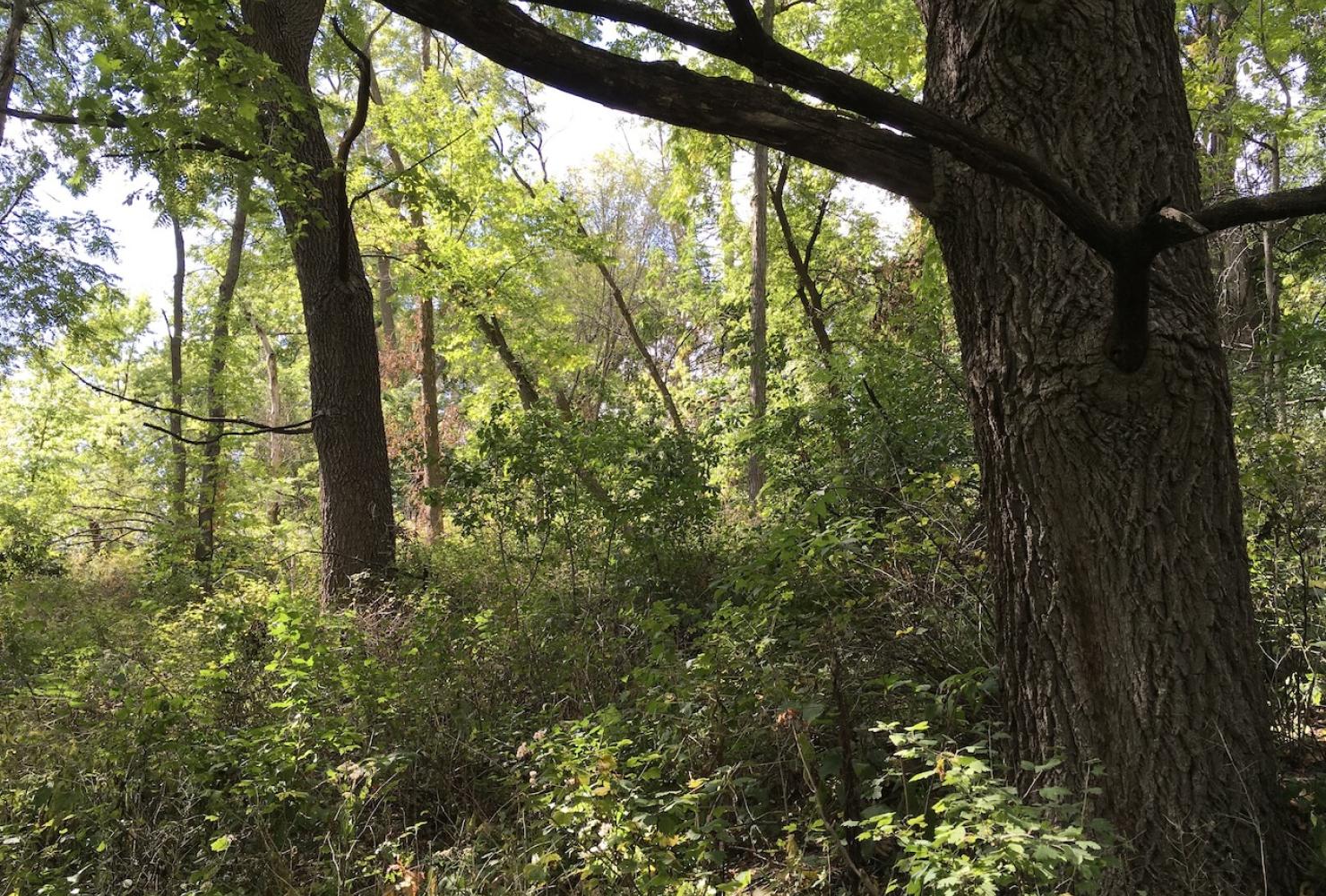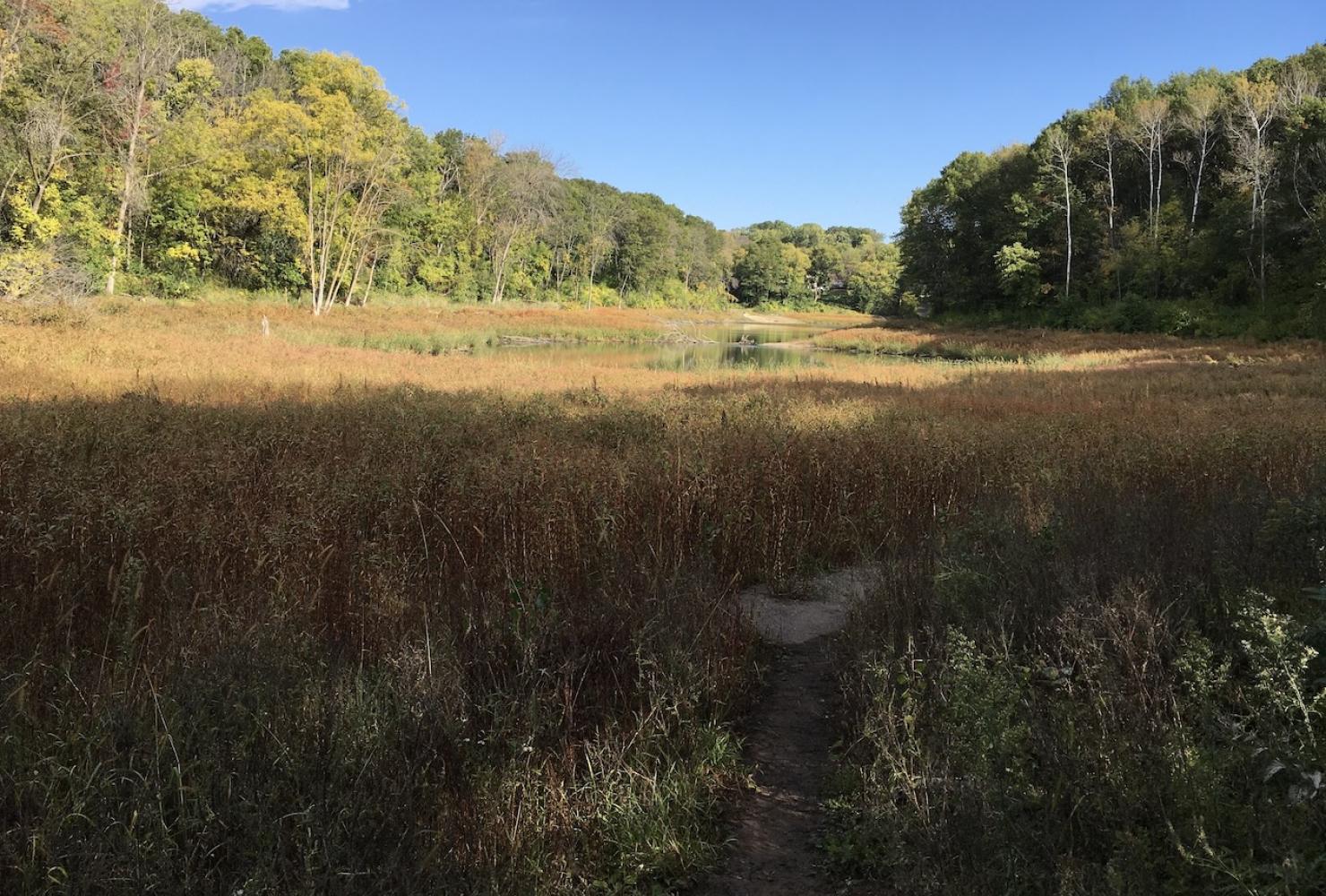Seidl's Lake Park
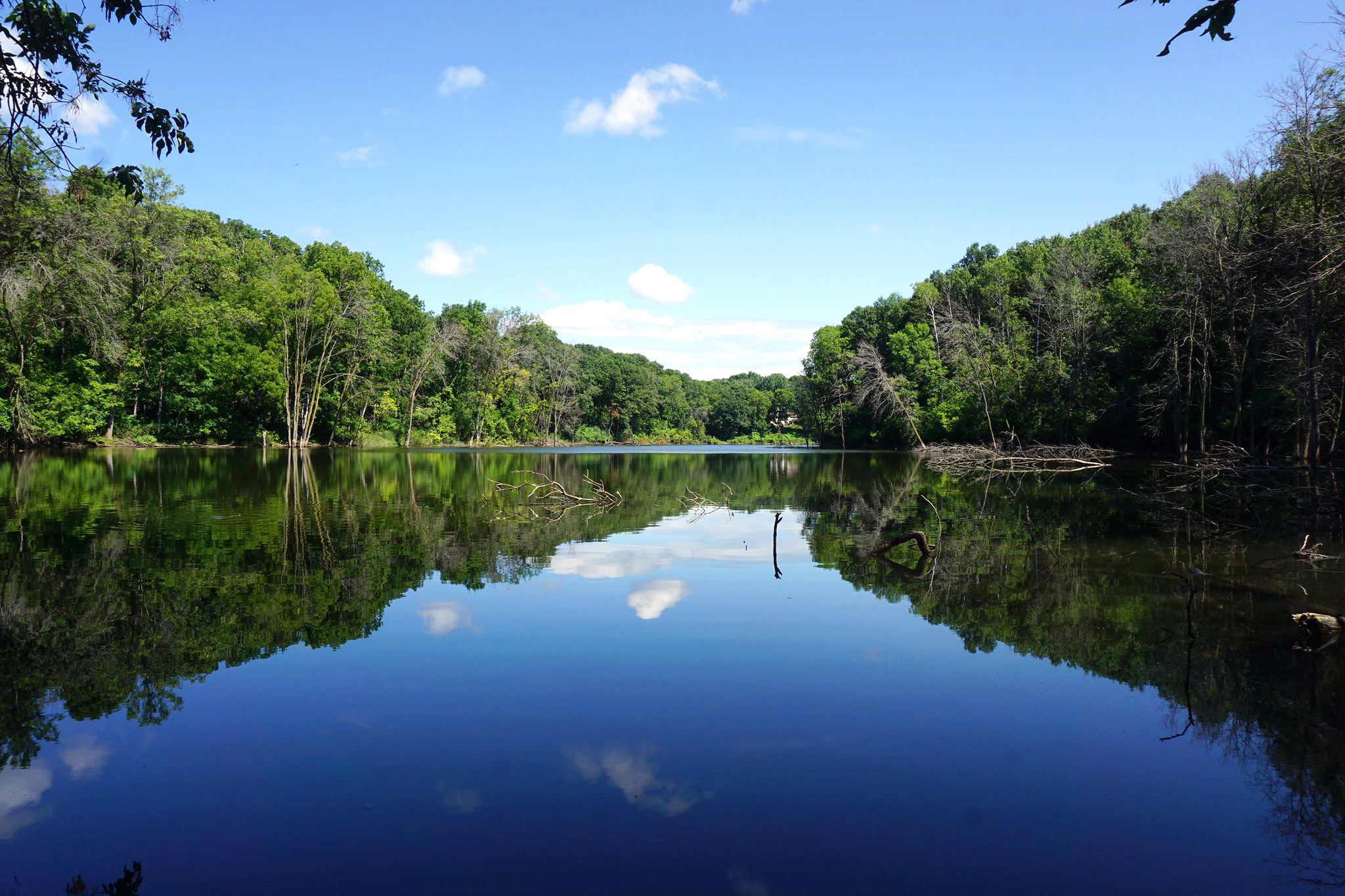
The woodlands surrounding the lake at Seidl's Park, a 37-acre natural area in Inver Grove Heights, are losing their buckthorn and gaining a restored understory that will support wildlife and prevent erosion.
Where is Seidl's Lake Park?
This city park, sitting on the border between South St. Paul and Inver Grove Heights, is a hidden gem tucked away in a neighborhood. Thirty-two acres of oak woodlands surround a 5-acre lake that filters sediment from stormwater draining from the surrounding neighborhoods.
While a park surrounded by neighborhoods might seem like an odd site for FMR to restore, this woodland is less than 2 miles from the Mississippi and is another link in an ever-growing habitat corridor along the river. We know that even small pockets of habitat in backyards and neighborhood parks are vital for providing food resources during spring migration, nectar and pollen for pollinators, and nesting spots for our resident wildlife.
The public is welcome to visit Seidl's Lake Park. (See the City of South St. Paul website and the City of Inver Grove website for more info.)
Our work here takes place on Dakota homelands.
What's special about Seidl's Lake Park?
Seidl's Lake Park has an interesting history. Aerial photography and historical accounts from the 1930s tell us that the land was a family dairy and sheep farm and that an apple orchard occupied the uplands to the east and west of the lake.
The lake was described as small and murky, except for a 10-foot deep spot in the middle that became the local swimming hole. Over time, the steep hills around the lake were somewhat leveled, and residential neighborhoods began to encircle the lake. Stormwater from these developments was routed to Seidl's Lake, which increased the lake's size, and small filtration basins now dot the park in the northeast, west and south.
Like other woodlands in Minnesota, common buckthorn has found its way to Seidl's Lake Park, which has changed significantly over the last 50 years. Still, 100-year-old white and bur oak and massive black walnut trees have persisted through all these changes, and the park offers many opportunities to restore the woodlands to better functioning habitats.
Our work at Seidl's Lake Park
Our work at Seidl's Lake Park was facilitated by the City-County Conservation Collaborative, a Dakota County program that provides cities with planning and restoration funding. With this funding, we created a natural resource management plan in 2022 and began implementing restoration at the park in 2023.
So that we can effectively maintain the areas we're restoring, we're phasing our work by starting on the Inver Grove Heights side of the park. Once those acres are restored, and the city and FMR can more easily maintain them, we'll move on to the South St. Paul half of the park.
As we work, we're prioritizing the reduction of invasive species like buckthorn and garlic mustard and replacing those species with native grasses, wildflowers and shrubs. These deep-rooted plants will prevent soil erosion on the park's steep slopes. Blooms throughout the growing season will support pollinators and other wildlife. Overall, our restoration will create natural systems with better resilience and ecological functions.
As a bonus to our work, in 2024 the cities of Inver Grove Heights and South St. Paul also rebuilt the park's aging primary trail, connecting the entire park to the surrounding neighborhoods and creating safe access to the lake. Because the park has such diverse habitats across its 37 acres, it tends to draw a range of wildlife. Cooper's hawks, great blue herons, red-bellied woodpeckers and minks have all been spotted at the park, and the trail serves as a way to explore and see all of these critters safely.
Find out more and get involved
- Volunteer with us to restore places like this.
- Contact FMR project lead Laura Domyancich-Lee.
Partners and funders for our work at Seidl's Lake Park
This work was made possible by the Lessard-Sams Outdoor Heritage Fund, Dakota County Parks, the City of Inver Grove Heights, the City of South St. Paul, Dakota County Soil and Water Conservation District and by our generous volunteers and donors like you!
Where we work
FMR maintains over three dozen habitat restoration and land protection sites in the metro area.
